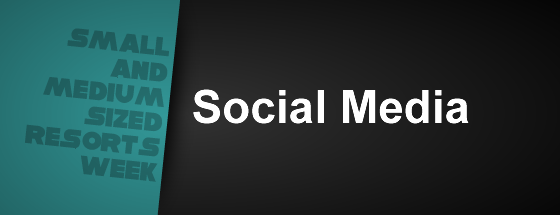Social Media
The Huge Advantage Small and Mid-Sized Ski Resorts Have on Social Media


BLANCHARD
I typically focus on a generic, one-size-fits-all approach to many of my posts. This week, I’ll be focusing more on the smaller mountains and sharing some insights and ideas specific to them. It doesn’t mean you big guys can’t benefit, but I’ve got a soft spot in my heart for the little guys.
For a few years now, I’ve had the same birthday tradition: bowling. I’m not much of a bowler, nor are the people I bring with me, but it’s a chance to have a fun time with a few close friends. I even request that no one brings presents. In my opinion, their time spent bowling with me is the best gift they could give.
This last year, I found myself in an interesting situation. Instead of the usual 5-6 close friends or family (usually it’s one or the other) it was 12 friends AND family. Suddenly the whole object of this tradition – to spend quality time with a few close friends – was flipped on its head. I still had a great time, but even with just a half dozen more guests, I found myself struggling to enjoy the company of everyone on an individual basis.
The Social Parallel
Now, you social butterflies are probably rolling your eyes at my lack of large-group-social-maneuvering skills, and the number may be more like 40-50 for you, but the principle is the same: the more people at the party, the harder it is to spend time with each of them.
Same goes for the inverse. The more people that come, the less “special” each one feels, not only because of the size of the invite list, but because of how little time the host can justify spending with any one person.
Social media engagement is often thought of solely in terms of follower to brand interaction. Likes, shares, comments, retweets, replies, etc. all flow in one direction: from the fan to the resort. However, as the circle of friends grows smaller (fewer fans, followers, etc.) the opportunity grows to develop friendships with a greater percentage of the group.
EdgeRank Meet HumanRank
EdgeRank is the algorithm Facebook uses to tell how relevant your content might be to any given fan. All those actions – likes, shares, comments, etc. – feed an endless stream of signals into this formula. The result can be boiled down a simple idea: more interaction with content now gives future content a better chance to be seen.
The opportunity that arises for these small resorts, is the reverse flow: from brand to skier. Instead of feeding signals into Facebook’s algorithm to determine relevancy between to things, the brand interacting individually with fans and followers feeds an endless steam of signals into that fan’s brain that helps them determine how close their relationship is to that brand.
The inverse is also true. If a brand DOES NOT reply to a tweet, comment, etc. directed to them, this also feeds important signals – just as EdgeRank treats the fact you having “liked” anything that Justin Bieber has shared (don’t even try to pretend you’re not his “fan” on Facebook).
The Opportunity
It’s a combination of these ideas – smaller circles help build closer relationships, brand to fan interaction feeds the HumanRank algorithm – that gives smaller resorts the upper hand. In a given week, large resorts can see hundreds of comments on their Facebook wall and an equally high number of mentions or replies on Twitter. For a small resort, that number may only be 25-50.
If a major resort tried to have consistent one-on-one contact with everyone, they’d be replying to hundreds of people a day and the “exclusive” feeling would go right out the window. Or they could reply to just a few and leave a hundred people hanging every day.
But as a small resort, you can reply to just a few every day (which keeps the exclusive feeling for each) AND reply to everyone (without leaving anyone hanging), truly building a personal, close network of people that are constantly being fed a stream of positive signals into their HumanRank algorithm that might just put your brand a step above the bigger, badder mountains down the road.
About Gregg & SlopeFillers
I've had more first-time visitors lately, so adding a quick "about" section. I started SlopeFillers in 2010
with the simple goal of sharing great resort marketing strategies. Today I run marketing for resort ecommerce and CRM provider
Inntopia,
my home mountain is the lovely Nordic Valley,
and my favorite marketing campaign remains the Ski Utah TV show that sold me on skiing as a kid in the 90s.
Get the weekly digest.
New stories, ideas, and jobs delivered to your inbox every Friday morning.
